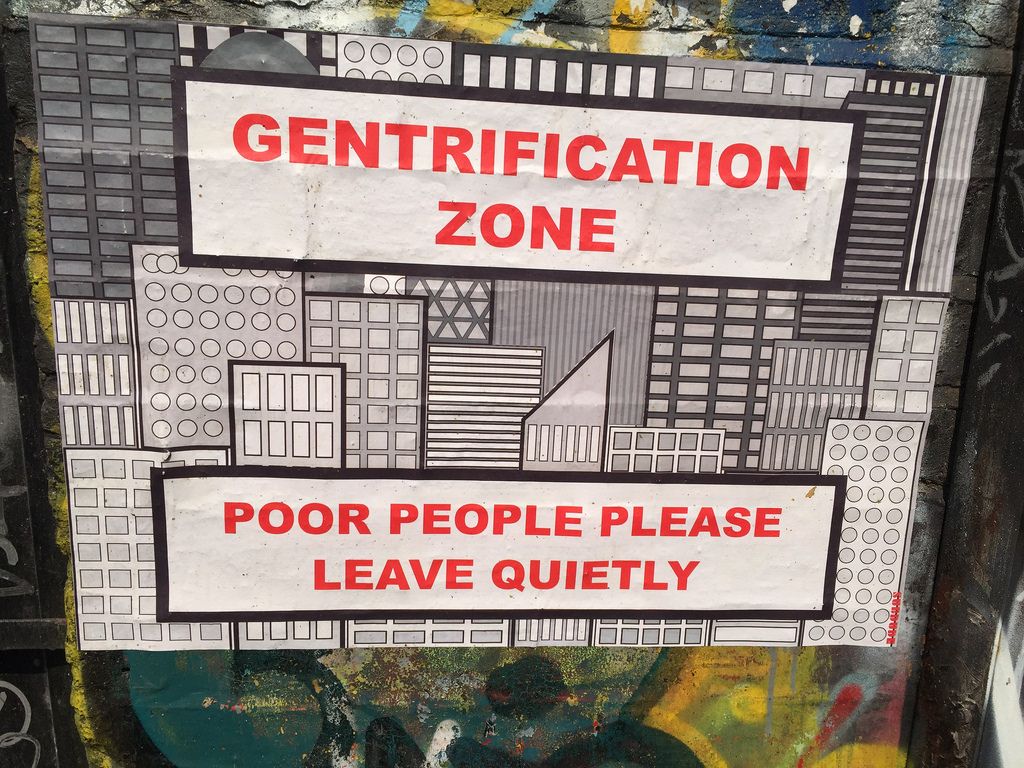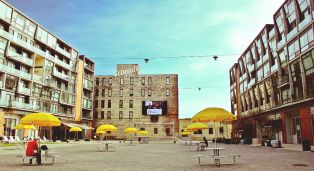
Have you ever taken a walk through West Chester, Northern Liberties or Manayunk at night? All of these areas are really nice, aren’t they? Full of bars, art galleries and nice restaurants with plenty of young people walking around. But how about Norristown, Kensington or North Philly?
Not exactly the nicest places to go for a nightly stroll. There might be excessive trash, needles on the ground at parks and some incredibly shady areas. Both sets had similar beginnings, where the towns were popular with blue collar families and had rich industries. Looking specifically at Norristown, the seat of the Montgomery County, where at one point in time it was a hub for government, banking, industrial services and more.
Now what’s the difference between the first set of towns and the second? The second half hasn’t experienced gentrification.
Here’s a scenario for those reading: Imagine you and your family are living in an urban area and have been there for roughly 10 years. Out of nowhere, new people keep moving in around you, people who seem to be more affluent than you, then one day your rent begins to increase. After a bit more time, your family can’t afford the rent and has now been forced out of your home. This is what is commonly referred to as gentrification.
Gentrification is a controversial topic when it comes to politics and urban renovation. The word is so controversial that just saying it tends to cause an emotion within people. It is defined as the “process of repairing and rebuilding homes in a deteriorating area accompanied by an influx of middle-class or affluent people.”
However the concept of gentrification isn’t limited to the physical aspects done to a neighborhood. In theory, gentrification is also about the renaissance of a community to increase economic sustainability.
However the reason the topic is controversial is because when you renovate an area and bring in more affluent people, the people who lived there beforehand are forced to leave. While no one actually tells them to leave, the increased rent eventually forces them out of their homes and onto the streets.
“In terms of how that process plays out, and some of the the things that are a little controversial about,” Eric Malm, the chairperson of Cabrini University’s business department, said. “One is the notion that somebody might go into somebody’s neighborhood and decide I want to change somebody’s neighborhood. Every neighborhood has issues, challenges, pluses and minuses but one of the things that’s a little controversial about gentrification essentially is outsiders coming into a neighborhood and trying to change it. With that intention which can be a well-intentioned thing, is also an implicit belief that the neighborhood that’s there now isn’t very good…Gentrification usually happens when real estate speculators come into a neighborhood, buy up a number of properties, fix them up, and hope they can kind of resell and repackage that neighborhood at a higher price.”
Arguments can be made that gentrification is commonly confused for another term that is brought up in urban development, economic displacement. This can be defined as the “loss of assets or access to assets that leads to loss of income sources or means of livelihood.” This seems to coincide with the ramifications of an area being gentrified with how their livelihood ends up being affected.
A study done in 1982 found that a small percentage of Americans, around one percent, as well as five percent of families (with eight and a half percent of urban families as well) suffered from economic displacement due to aspects such as neighborhood changes, sale, eviction as well as a few other reasons. This shows that there is some sort of connection between gentrification and economic displacement. Whether or not the connection is due to it being one and the same with gentrification or being a cause-and-effect sort of relationship is undetermined.
“To me, economic displacement is a part of gentrification or is a result of (gentrification),” Malm said.
Part of the discussion about gentrification and its controversy is whether or not it is ethical. One of the viewpoints in regards to gentrification (as well as economic displacement) is that it is necessary for a city/town to become better and have more economic sustainability.
“People get confused by a ‘moral compass’ they would have you believe it’s wrong to move the poor out of a neighborhood. But I would argue that it’s not wrong,” gentrification advocate Erik Goodwin said. “Most of the time these neighborhoods are dangerous areas. Dangerous areas to live aren’t fixed by new upholstery, it’s fixed by getting those people out of there. If you look at what’s happening in Kensington right now, they are trying to fix a broken neighborhood through gentrification, moving the junkies, the homeless, and the poor out of there so they can make room for affluent people. If making a neighborhood safer, more pleasant, and more aesthetically pleasing is wrong, then what’s right?”
On the other side of the coin are the people who believe gentrification to be an unethical process. This argument tends to be focused on the people being affected by gentrification instead of the neighborhoods themselves.

Photo by: Justin Wolfe
Attribution 2.0 Generic (CC BY 2.0)
“When I think about gentrification, the first thing I think about is the people who are forced to move out of their homes,” education major Eric Soll said. “And it’s not like they choose to move; they typically don’t even have that option. When you gentrify a neighborhood such as Fishtown; you force these people to leave and either have to find a new home that they can finance or they end up being forced onto the streets. Philadelphia has an incredibly high homeless rate, it’s one of the highest, if not the highest, in the entire country. When we take people who are already struggling yet have the ability to have a roof over their head and force them out onto the street, you’re making another problem worse. And for those who move to a new area and find somewhere to live, it’s usually in an area similar to the one you moved away from prior to the gentrification. Which means that you will potentially be forced out by gentrification in the future. It happened in Fishtown, a decent portion of the people there moved to Kensington and now they are dealing with the issue again. It’s a terrible cycle that gets imposed by gentrification. You either get displaced onto the streets or you move into a new area where the same thing can happen again and you end up resetting the cycle.”
A lot of things come with the topic of gentrification, a lot of discussion about whether or not it’s a morally just thing to do. However the conversation that doesn’t seem to come up all too often is: is there a way to have an area go through a renaissance without forcing out those who already live there?
“Over the last couple years I’ve been working with some people in the Norristown community to find some alternative paths to community development that include residents in a local community instead of excluding them,” Malm said. “We’ve been looking at models that might include cooperative ownership and other models that allow members in a local community to find ways to at least approximate home owners as a neighborhood improves and provides an opportunity and incentive to help in that process. Everyone wants a safe community, everyone wants decent housing, there are good elements of neighborhood improvement but part of the ethical question is the way in which local res are treated and how they fair. There are ways, not typical but, ways that process can happen that include those people instead of excluding and displacing them.”


